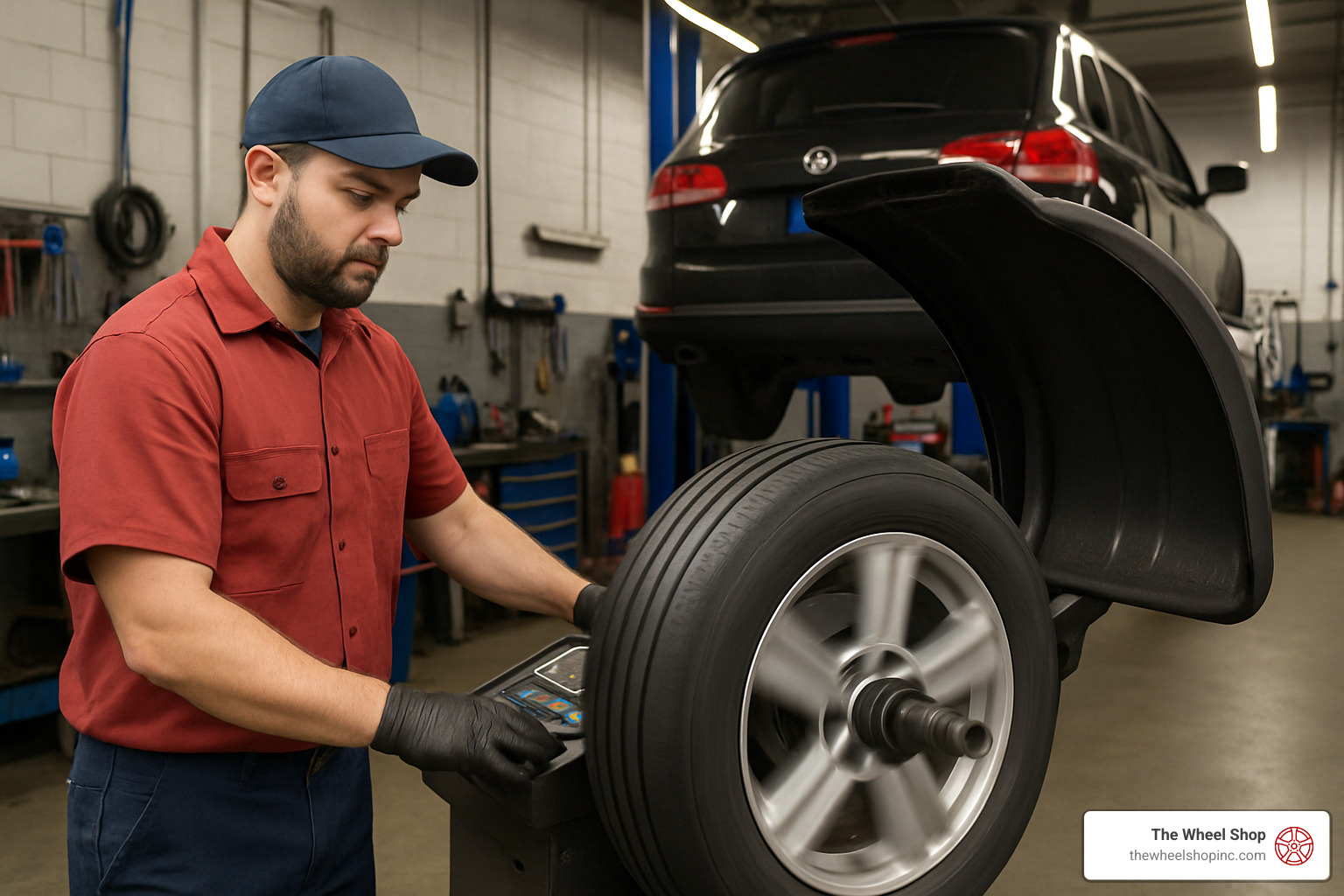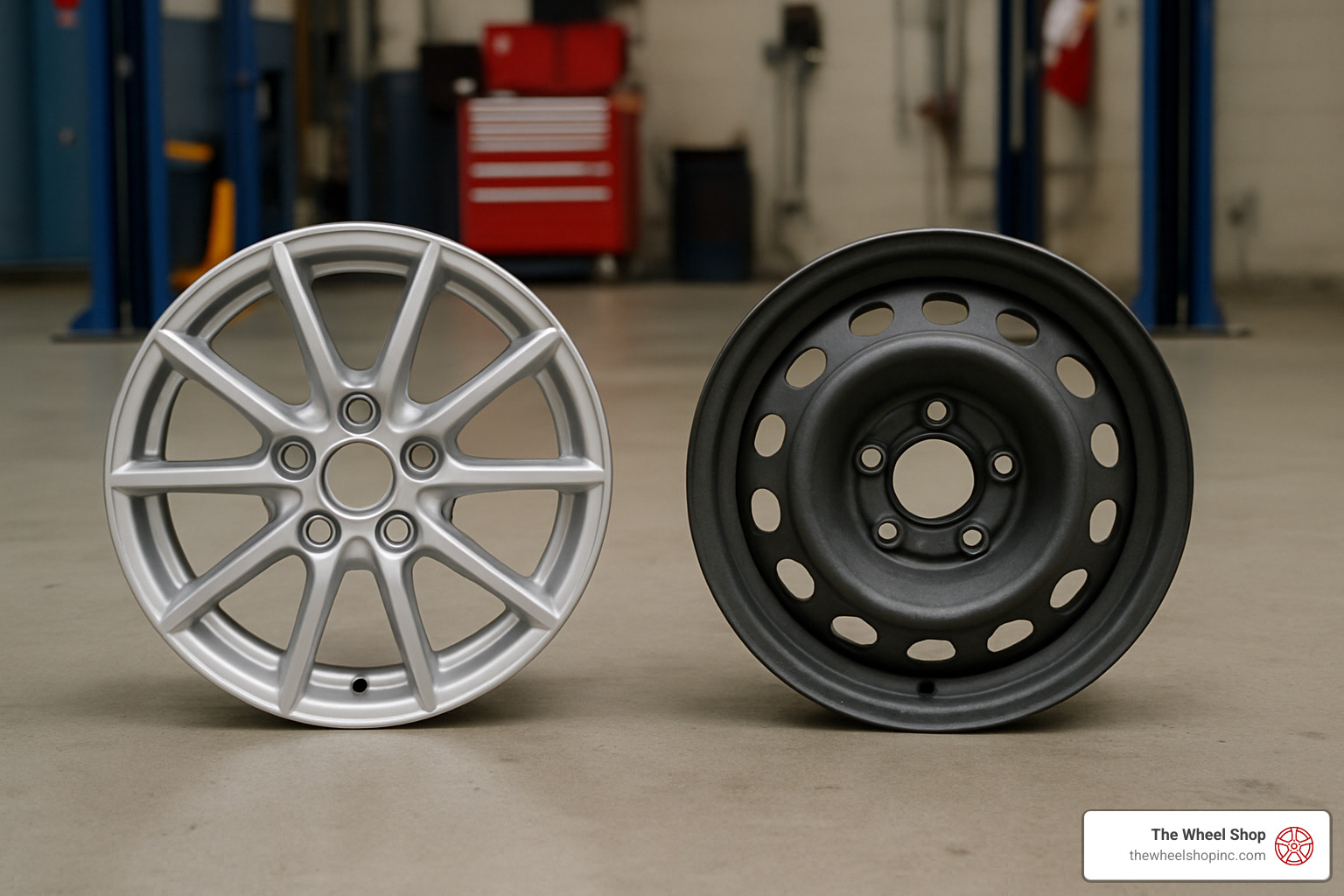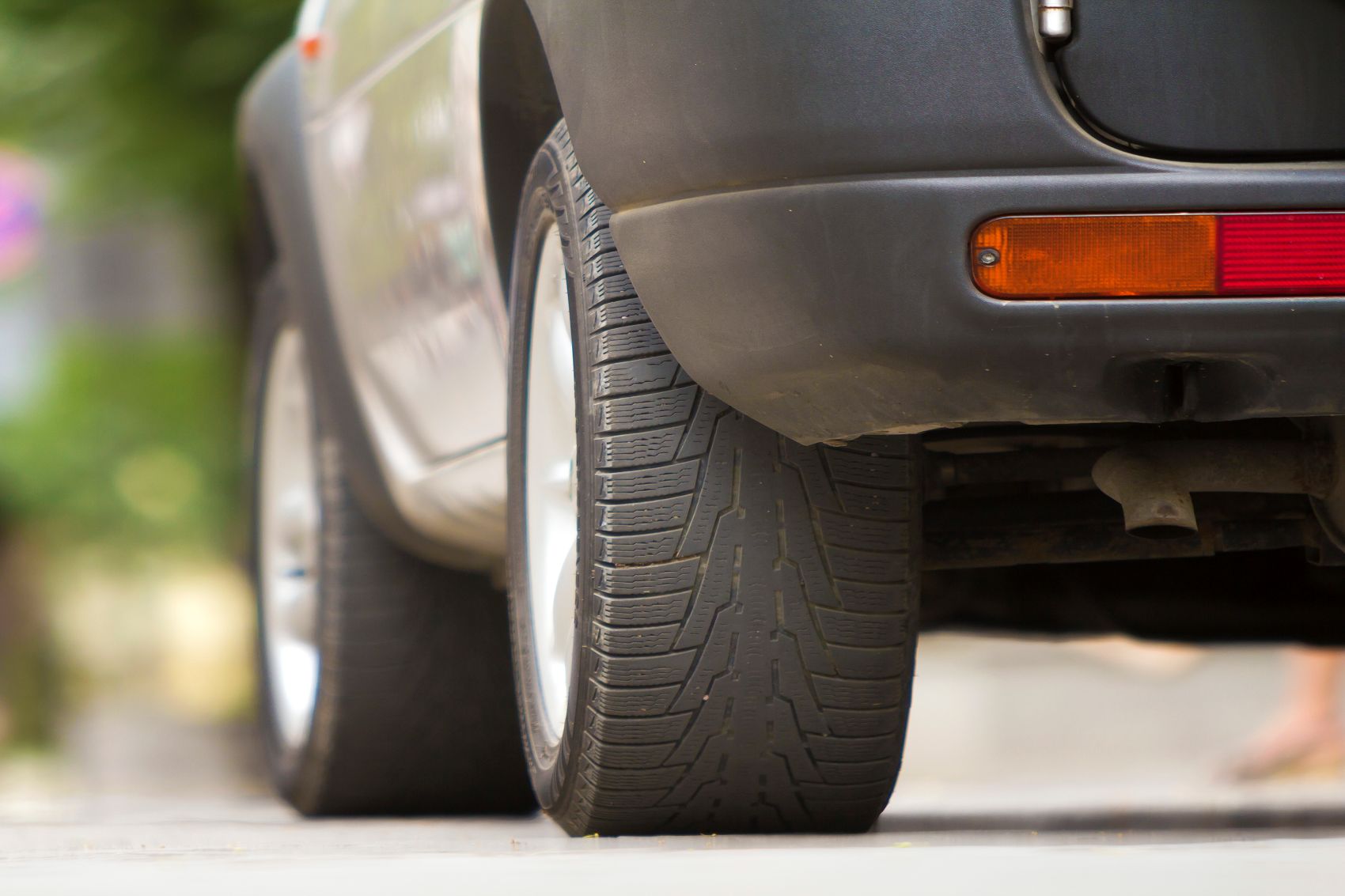Wheels play a vital role in a vehicle’s performance, providing the necessary connection between the car and the road. While designed to withstand tough conditions, they are still vulnerable to a range of damages that can affect both their function and appearance. From bent rims to cracks and corrosion, several factors contribute to wheel damage. Understanding these common causes is essential for preventing issues that could compromise the safety and longevity of your vehicle. Proper maintenance and awareness can help keep your wheels in top shape, avoiding costly repairs and ensuring a smoother ride.
Whether it’s navigating rough patches in Riverside, CA, or ensuring your tires are properly inflated, being aware of these common causes of wheel damage will help you avoid potential mishaps and maintain a dependable driving experience.
Potholes and Road Debris
Potholes and road debris are some of the most common causes of wheel damage. These hazards can lead to bent or cracked wheels, which can compromise your vehicle’s safety and performance.
Potholes
Potholes are notorious for causing wheel damage. They often appear unexpectedly on the road, especially after heavy rain or sleet. When you hit a pothole, the impact can bend your wheel or even crack it. This is particularly common with low-profile tires, which have less cushioning to absorb the shock.
- Bent Wheels: A bent wheel can cause your vehicle to vibrate, especially at higher speeds. This vibration is not just annoying; it can also lead to more severe damage to your car’s suspension or steering systems.
- Cracked Wheels: Cracks in wheels can lead to air leaks, causing your tires to deflate. This can be dangerous, especially if it happens suddenly while driving at high speed.
Road Debris
Road debris includes everything from small rocks to larger objects like ladders or pieces of metal. These can be equally damaging to your wheels.
- Impact Damage: Hitting debris can cause similar damage as potholes, resulting in bent or cracked wheels.
- Scratches and Scuffs: While not as severe as bending or cracking, scratches and scuffs from debris can expose the wheel’s metal, leading to corrosion over time.
Preventive Measures
- Stay Alert: Always keep an eye out for potholes and debris. If you see a potential hazard, slow down and try to avoid it safely.
- Regular Inspections: After encountering a pothole or debris, inspect your wheels for any visible damage. If you notice vibrations or hear unusual noises, have your wheels checked by a professional.
- Maintain Proper Tire Pressure: Keeping your tires properly inflated can help absorb some of the shocks from potholes and debris.
Understanding how potholes and road debris affect your wheels can help you take preventive measures. This knowledge will keep your vehicle safe and running smoothly on the roads of Riverside, CA, and beyond.
Curb Damage
Curb damage is another common cause of wheel damage that many drivers experience, especially in tight parking situations. This type of damage often results in curb rash, which can lead to scuffs and scratches on your wheels.
Curb Rash
Curb rash occurs when a wheel scrapes against a curb, often during parallel parking or making tight turns. This can remove the protective coating on the wheel, exposing the metal underneath.
- Scuffs and Scratches: These are the most visible signs of curb rash. While they may seem minor, they can lead to more serious issues over time. The exposed metal can start to corrode, especially in harsh weather conditions.
- Cosmetic vs. Structural Damage: Curb rash is typically cosmetic, affecting the wheel’s appearance rather than its function. However, it’s important to address it quickly to prevent further deterioration.
Parking Challenges
Parking can be tricky, especially in crowded areas. Tight spaces and high curbs increase the risk of scraping your wheels.
- Parallel Parking: This is a common scenario where curb rash occurs. Drivers may misjudge the distance between the curb and the wheel, resulting in scrapes.
- Drive-Thru Lanes: These lanes often have curbs that are difficult to see, especially at night or in bad weather. Drivers might accidentally brush against them, causing damage.
Preventive Measures
- Use Technology: Many modern vehicles come with parking sensors and cameras. Use these tools to help you park safely and avoid curbs.
- Practice Parking: Spend time practicing your parking skills in a safe environment. This can help you become more confident and avoid accidental scrapes.
- Be Mindful: Always be aware of your surroundings when parking. Take your time and adjust your mirrors to get a better view of the curb.
Addressing curb damage promptly can save you from more extensive repairs later. By understanding how curb rash occurs and taking preventive measures, you can keep your wheels in top condition and maintain the overall appearance of your vehicle.
Tire Issues
Tire issues are a major contributor to wheel damage and can significantly affect your driving experience. Let’s explore some common problems like flat tires, underinflation, overinflation, and sidewall damage.
Flat Tires
Flat tires are a headache for any driver. They can happen unexpectedly and leave you stranded on the side of the road.
- Causes: Punctures from nails, glass, or other road debris are common culprits. Sometimes, a flat tire results from a slow leak due to a faulty valve or rim damage.
- Prevention: Regularly check your tires for visible damage and ensure they are properly inflated. Keeping a tire repair kit or a spare tire in your vehicle can also be a lifesaver.
Underinflation
Driving with underinflated tires can lead to uneven wear and tear, reducing the lifespan of your tires and wheels.
- Effects: Underinflated tires cause the tread to sag and put extra pressure on the tire’s shoulders. This can lead to increased wear on the sidewalls, which are more vulnerable to damage.
- Solution: Check your tire pressure regularly, especially before long trips. Most modern cars have a tire pressure monitoring system (TPMS) that alerts you when the pressure is low.
Overinflation
Overinflating your tires might seem like a good idea to improve fuel efficiency, but it can lead to serious issues.
- Consequences: Overinflated tires cause the center of the tread to bulge, leading to uneven contact with the road. This increases the risk of a blowout and can make your ride uncomfortable.
- Recommendation: Follow the manufacturer’s recommended tire pressure, usually found in the vehicle’s manual or on a label inside the driver’s door.
Sidewall Damage
Sidewalls are the most vulnerable part of the tire, and damage here can be dangerous.
- Risks: A cut or gash in the sidewall can lead to a blowout, especially at high speeds. Sidewall damage is often caused by hitting curbs or sharp objects on the road.
- Protection: Avoid driving too close to curbs and be cautious on roads with debris. Maintaining the correct tire pressure can also help reinforce the sidewalls.
By understanding these common tire issues and taking preventive measures, you can reduce the risk of wheel damage and ensure a smoother and safer driving experience. Regular maintenance and checks are key to keeping your tires and wheels in top condition.
Chemical and Environmental Factors
Chemical and environmental factors play a significant role in wheel damage. Let’s explore how brake dust, cleaning products, salted roads, and corrosion can affect your wheels.
Brake Dust
Brake dust is a common byproduct of braking systems. It consists of tiny particles from brake pads and rotors.
- Impact: Over time, brake dust can accumulate on your wheels and cause corrosion. This is especially true for alloy wheels, which are more sensitive to chemical reactions.
- Prevention: Regularly clean your wheels using mild soap and water. Avoid harsh cleaners that can damage the finish.
Cleaning Products
While keeping your wheels clean is important, not all cleaning products are wheel-friendly.
- Effects: Some abrasive wheel cleaners contain chemicals that can corrode or tarnish wheel surfaces. This can lead to permanent damage if not addressed.
- Tip: Use cleaners specifically designed for wheels and follow the manufacturer’s instructions. Always rinse thoroughly to remove any residue.
Salted Roads
In areas where winter road maintenance involves salting, wheels can suffer significant damage.
- Damage: Salt accelerates corrosion, especially on metal surfaces. This can lead to pitting and rust, weakening the wheel structure over time.
- Solution: Rinse your wheels regularly during winter months to remove salt. Applying a protective wax can also help create a barrier against salt.
Corrosion
Corrosion is a natural enemy of all metal components, including your wheels.
- Causes: Exposure to moisture, road salts, and chemicals can lead to corrosion. Once it starts, it can quickly spread and cause severe damage.
- Prevention: Keep your wheels clean and dry. Regular inspections can help catch corrosion early, allowing for timely repairs.
By being mindful of these chemical and environmental factors, you can better protect your wheels from damage and extend their lifespan. Regular maintenance and appropriate cleaning practices are essential in preventing corrosion and keeping your wheels looking and performing their best.
Improper Maintenance and Driving Habits
Your driving habits and how you maintain your vehicle can significantly impact wheel health. Let’s explore some of the most common causes of wheel damage related to maintenance and driving habits.
Aggressive Driving
Aggressive driving, such as rapid acceleration, hard braking, and sharp turns, can put immense stress on your wheels.
- Impact: This driving style increases the risk of hitting potholes or curbs with more force, leading to bent or cracked wheels. It also contributes to uneven tire wear.
- Mitigation: Drive smoothly and at moderate speeds. Anticipate stops and turns to reduce sudden movements.
Wheel Misalignment
Misaligned wheels can cause a host of problems, not just for your tires but for the entire vehicle.
- Effects: Misalignment leads to uneven tire wear, pulling to one side, and a shaky steering wheel. Over time, this can damage wheel bearings and suspension components.
- Solution: Regularly check your wheel alignment, especially after hitting a pothole or curb. Proper alignment ensures your vehicle handles smoothly and reduces tire wear.
Irregular Tire Rotations
Tire rotation is crucial for even tire wear and maintaining wheel health.
- Consequences: Skipping tire rotations can cause some tires to wear out faster than others. This uneven wear can lead to increased stress on certain wheels, potentially causing damage.
- Tip: Rotate your tires every 5,000 to 7,500 miles, or as recommended by your vehicle manufacturer. Regular rotations help distribute wear evenly across all tires, extending their lifespan.
By addressing these improper maintenance and driving habits, you can reduce the risk of wheel damage and improve your vehicle’s overall performance. Simple changes in driving style and regular maintenance checks can make a big difference in keeping your wheels in top condition.
Frequently Asked Questions about Wheel Damage
What is the most common cause of wheel damage?
How does a wheel get damaged?
Potholes and curbs are notorious culprits when it comes to wheel damage. Hitting a pothole can bend or crack your wheels, especially if you’re driving fast. Curbs can cause curb rash, leaving unsightly scuffs and scratches on your wheels. Even a slight brush against a curb while parking can result in damage.
What are the consequences of not repairing wheel damage?
Ignoring wheel damage can lead to uneven tire wear. This unevenness causes your tires to wear out faster, reducing their lifespan. Additionally, wheel damage can cause steering wheel vibration, making your drive uncomfortable and potentially unsafe. Over time, these vibrations can affect other parts of your vehicle, like the steering and suspension systems. Regularly inspecting and repairing your wheels can prevent these issues and ensure a smooth and safe ride.
The Wheel Shop Difference
At The Wheel Shop, we understand the frustration that comes with wheel damage. Whether it’s a bent wheel from a pothole or scuffs from an unexpected curb encounter, wheel damage can be more than just an inconvenience. It can affect your vehicle’s performance and safety. That’s why we are committed to providing top-notch wheel repair services in Riverside, CA.
Our team specializes in restoring wheels to their original condition with precision and care. With over twenty years of experience, we pride ourselves on delivering top-tier craftsmanship. Our skilled technicians use the latest techniques and tools to ensure your wheels are repaired correctly and efficiently.
But we don’t just stop at repairs. Customer service is at the heart of what we do. We believe in offering a smooth and hassle-free experience from start to finish. Our knowledgeable staff is always ready to guide you through the process, answer any questions, and provide expert advice on maintaining your wheels and tires.
So, if you’re dealing with wheel damage, don’t wait for it to get worse. Trust us to handle your wheel repair needs with the expertise and attention to detail that your vehicle deserves.
For more information about our services or to schedule a repair, visit our wheel repair page. Let us help you get back on the road safely and confidently.







